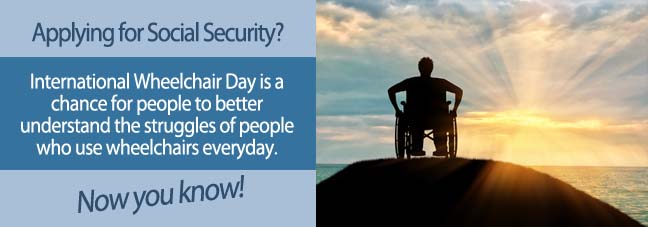Around 3 million people in the United States rely on a wheelchair every day. From daily tasks to general mobility, wheelchairs provide people with a way to overcome their disability and live relatively normal lives. However, even today, accessibility issues isolate wheelchair users and prevent them from seeing much of the world.
This International Wheelchair Day, do your part to learn about the afflictions that limit mobility and bring awareness to the struggles wheelchair users face. With education, the future will continue to become accessible for all.
What Causes Severe Mobility Issues?
Mobility issues are a result of hundreds of different afflictions. Sometimes mobility issues stem from accidents. For example, those with an amputation above the knee may not be eligible for prosthetic limbs, requiring them to use a wheelchair. Other injuries to the brain, spine, or limbs from an accident may also cause permanent damage that requires mobility assistance.
That being said, for many, certain illnesses and disorders are the root of their dependence on a wheelchair. For example, multiple sclerosis is a condition that results in nerve damage in the brain and spinal cord. As the nerves are progressively damaged, muscles grow weaker or become fully paralyzed, preventing the patient from moving normally.
Similar effects are seen from other paralyzing afflictions like strokes or Cerebral Palsy. Even diseases like arthritis can become severe enough to limit a person’s mobility.
Prevention of Mobility Problems
Unfortunately, some mobility-causing afflictions are impossible to see coming. However, to help prevent mobility issues from occurring, there are some steps you can take. These include:
- Maintaining a healthy relationship with your doctor(s). Especially as you age, it is important to attend annual or bi-annual check-ups to keep track of your health and physical ability. This can also help stop some severe illnesses before they drastically impact your life.
- Staying active, eating healthy, and abstaining from smoking. This is recommended for anyone regardless of age or health status, and is universally considered to promote an illness-free life.
- Being honest and aware of your health. This means getting help with illnesses before they get worse and taking care of yourself properly when you are sick.
- Staying positive and motivated. Even after a severe diagnosis, a positive attitude can help boost the success of therapeutic treatments and potentially reduce the need for assistive devices.
Living with a Wheelchair
Living life dependent on a mobility device can be a struggle. One of the main issues that arises with constant chair use is pressure sore vulnerability. Because many wheelchair users are unable to stand, the constant pressure from sitting on the buttocks and legs can be painful. While wheelchair technology is constantly improving, more comfortable devices can also be expensive, especially for users without access to insurance.
Especially in public, there are many logistical and social issues that come with using a wheelchair. While most buses and trains are accessible by chair, their accommodations can be crude, out of order, or incredibly inconvenient for all involved. This can sometimes discourage wheelchair users from getting out at all. The public stigma still associated with wheelchairs can also be disheartening for those trying to live their life in public without receiving the ever-common weird looks and questions.
However, in spite of the problems, wheelchair users are by no means defined by their mobility device — many live happy, healthy, independent lives.
Additional Resources
If you or a loved one relies on a wheelchair for day-to-day living and is looking for additional assistance, Social Security Disability Insurance (SSDI) may be an option. Social Security can provide monthly benefits to patients and families who are financially unable to function due to their impairment.
Even those without a definite diagnosis can receive assistance for symptoms that are severe enough. For more information on SSDI or the application process, you can refer to the Social Security Administration’s website or speak with a Social Security disability attorney.
